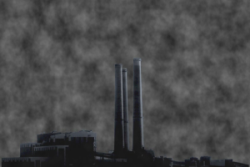Here goes a sample of remarkable notes embedded in the Climategate source code data. I’m just throwing these in rough style to link back to for a wider encompassing article I’m working on:
datathresh=datathresh
;
; THIS WORKS WITH REMTS BEING A 2D ARRAY (nseries,ntime) OF MULTIPLE TIMESERIES
; WHOSE INFLUENCE IS TO BE REMOVED. UNFORTUNATELY THE IDL5.4 p_correlate
; FAILS WITH >1 SERIES TO HOLD CONSTANT, SO I HAVE TO REMOVE THEIR INFLUENCE
; FROM BOTH INDTS AND DEPTS USING MULTIPLE LINEAR REGRESSION AND THEN USE THE
; USUAL correlate FUNCTION ON THE RESIDUALS.
;
pro maps12,yrstart,doinfill=doinfill
;
; Plots 24 yearly maps of calibrated (PCR-infilled or not) MXD reconstructions
; of growing season temperatures. Uses “corrected” MXD – but shouldn’t usually
; plot past 1960 because these will be artificially adjusted to look closer to
; the real temperatures.
;
;
; Plots (1 at a time) yearly maps of calibrated (PCR-infilled or not) MXD
; reconstructions
; of growing season temperatures. Uses “corrected” MXD – but shouldn’t usually
; plot past 1960 because these will be artificially adjusted to look closer to
; the real temperatures.
===========================
; Computes regressions on full, high and low pass Esper et al. (2002) series,
; anomalies against full NH temperatures and other series.
; CALIBRATES IT AGAINST THE LAND-ONLY TEMPERATURES NORTH OF 20 N
;
; Specify period over which to compute the regressions (stop in 1960 to avoid
; the decline
;
=======================
; anomalies against full NH temperatures.
; THIS IS FOR THE AGE-BANDED (ALL BANDS) STUFF OF HARRY’S
;
; Specify period over which to compute the regressions (stop in 1940 to avoid
; the decline
;
======================
; anomalies against full NH temperatures.
; THIS IS FOR THE Mann et al. reconstruction
; CALIBRATES IT AGAINST THE LAND-ONLY TEMPERATURES NORTH OF 20 N
; IN FACT, I NOW HAVE AN ANNUAL LAND-ONLY NORTH OF 20N VERSION OF MANN,
; SO I CAN CALIBRATE THIS TOO – WHICH MEANS I’m ONLY ALTERING THE SEASON
====================
; standardised datasets.
; Reads Harry’s regional timeseries and outputs the 1600-1992 portion
; with missing values set appropriately. Uses mxd, and just the
; “all band” timeseries
;****** APPLIES A VERY ARTIFICIAL CORRECTION FOR DECLINE*********
=====================
frs_gts_anom.PRO:
print,’Calculating synthetic frs normal’
for iy=nor1,nor2 do begin
tmpfl=strip(string(tmp_prefix,iy))
dtrfl=strip(string(dtr_prefix,iy))
rdbin,tmpgrd,tmpfl,gridsize=2.5,/quiet
rdbin,dtrgrd,dtrfl,gridsize=2.5,/quiet
tmn(nland)=(tmpgrd(nland)-(0.5*dtrgrd(nland)))/10.0
frssyn(nland)=frssyn(nland)+frscal(tmn(nland))
endfor
frssyn(nland)=frssyn(nland)/(nor2-nor1+1)
for im=0,11 do begin
temp=frssyn(*,*,im)
nfin=where(temp gt 0)
temp(nfin)=(temp(nfin)/100.0)*days(im)
frssyn(*,*,im)=temp
endfor
frssyn(nsea)=-999.9
; Calculate synthetic frs from tmin, convert to anomalies
; relative to synthetic mean frs, and apply to normal frs
print,’Calculating synthetic anomalies’
============================
mann/abdlowfreq2grid:
; The calibrated (uncorrected) versions of all these data sets are used.
; However, the same adjustment is then applied to the corrected version of
; the grid Hugershoff data, so that both uncorrected and corrected versions
; are available with the appropriate low frequency variability. There is some
; ambiguity during the modern period here, however, because the corrected
; version has already been artificially adjusted to reproduce the largest
; scales of observed temperature over recent decades – so a new adjustment
; would be unwelcome. Therefore, the adjustment term is scaled back towards
; zero when being applied to the corrected data set, so that it is linearly
; interpolated from its 1950 value to zero at 1970 and kept at zero thereafter.
===================
mann/mxd_eof_rotate:
; Can use corrected or uncorrected MXD data (i.e., corrected for the decline).
; Do not usually rotate, since this loses the common volcanic and global
; warming signal, and results in regional-mean series instead.
; Generally use the correlation matrix EOFs.
=======================
mann/mxd_pcr_localtemp:
; EOFs of the MXD data set. This is PCR, although PCs are used as predictors
; but not as predictands. This PCR-infilling must be done for a number of
; periods, with different EOFs for each period (due to different spatial
; coverage). *BUT* don’t do special PCR for the modern period (post-1976),
; since they won’t be used due to the decline/correction problem.
; Certain boxes that appear to reconstruct well are “manually” removed because
; they are isolated and away from any trees.
==================
mann/oldprog/hovmueller_lon:
; growing season reconstructions. Uses “corrected” MXD – but shouldn’t usually
; plot past 1960 because these will be artificially adjusted to look closer to
; the real temperatures.
=========================
mann/oldprog/calibrate_correctmxd:
; MXD over 1911-1990, applied the calibration to unfiltered MXD data (which
; gives a zero mean over 1881-1960) after extending the calibration to boxes
; without temperature data (pl_calibmxd1.pro). We have identified and
; artificially removed (i.e. corrected) the decline in this calibrated
; data set. We now recalibrate this corrected calibrated dataset against
; the unfiltered 1911-1990 temperature data, and apply the same calibration
; to the corrected and uncorrected calibrated MXD data.
![Transhumanism v1.0: Teenage Social Popularity Anxiety Obsessionism Immortalized [written by] (2013)](https://ignoranceisfutile.files.wordpress.com/2013/06/knife.jpg)
![Elect All Serial Killers [written by] (2013)](https://ignoranceisfutile.files.wordpress.com/2013/06/elect.jpg)








What a material of un-ambiguity and preserveness of valuable knowledge regarding unpredicted emotions.
Everything is very open with a very clear explanation of the challenges.
It was really informative. Your site is very helpful. Many thanks for sharing!